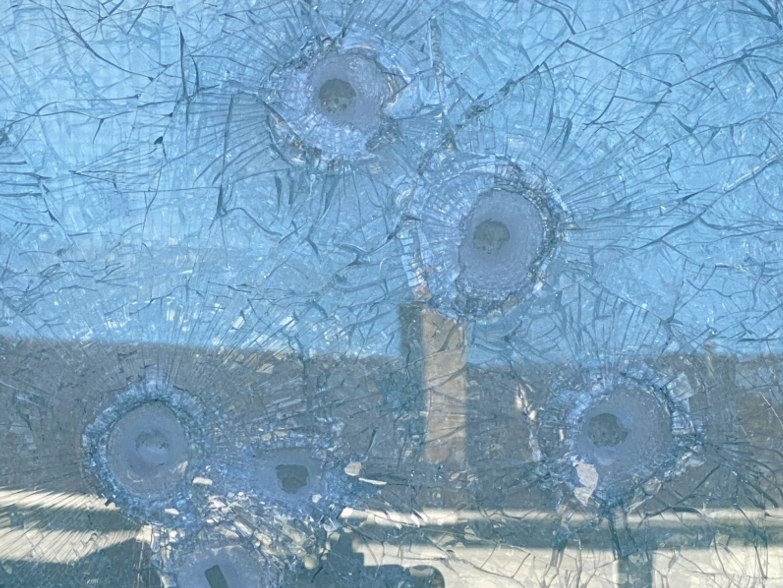The invention of bulletproof glass is not attributed to a single person. Small, iterative advancements throughout history have given us the modern products that now protect countless lives across many industries, including military, government, law enforcement, financial, education, retail, and more.
So how did this advanced protection enter our daily lives? Through novelty tricks, scientific breakthroughs, lab accidents, and more. Read on to learn each step of the history of bulletproof glass.
The Discovery of Tempering Creates Stronger Glass Products
In 1661, a time when only the rich could afford to add glass windows to their homes, Prince Rupert popularized a curious scientific trick in which a tadpole-shaped drop of molten glass is dropped into cool water. This effectively created a drop of tempered glass, as the resulting “Prince Rupert’s Drop” was extremely durable on the round end but fragile on the tail end. In 1661, the newly formed Royal Society studied these novelties.
Tempered glass was patented nearly 300 years later, in 1935. Tempered glass is characterized by compression forces on the outer surface and tension stress on the interior surface. So, the internal stresses cause tempered glass to shatter into blunt, granular fragments rather than the sharp, jagged edges that make broken regular glass so dangerous.
The Development of Lamination Introduces Shatter-Proof Glass
The idea of laminated glass evolved from a lab accident. French chemist Edouard Benedictus mistakenly dropped a used beaker still coated in plastic cellulose nitrate from previous experiments. When the beaker hit the ground, Edouard noticed it had cracked but did not shatter.
Benedictus went on to register the first safety glass patent in 1909 after bonding a piece of plastic cellulose between two sheets of glass. The adhesive film was initially used to make safer windshields since glass shard injuries were a major hazard in early car accidents. This laminated glass was called Triplex.
Laminated glass first saw widespread use in World War I gas masks. A better lamination adhesive was invented in 1927 when Canadian scientists created polyvinyl buteryl (PVB). This new film was resistant to penetration and discoloration. By World War II, thick panes of tempered glass laminated with PVB added protection to bunkers and vehicles. These were the first ballistic windows.
Plastics Advancements Lead to New Glazing Options
In order to make laminated glass strong enough to stop a bullet, many layers of glass needed to be laminated together, resulting in an extremely heavy, bulky product. This also limited the windows’ size and usability.
However, the discovery and evolution of various types of plastics with similar properties to glass, without the weight limitations, propelled bulletproof glass advancements. One of these plastics, polycarbonate, was invented in 1953. The new product was a strong, glass-like alternative. Most importantly, it worked well for dispersing energy—a key feature of modern bulletproof glass.
When Was Bulletproof Glass Invented?
While scientific advancements throughout history laid the groundwork for ballistic glass, the first bulletproof glass patent wasn’t granted until 1982.
The first U.S. patent for bulletproof glass, titled Composite Pane Having a High Resistance to Impacts, described a glazing that was particularly suited for resistance to “projectiles fired from fire-arms.” This patent tied together all the advancements of the previous century.
Authors Jacques Sauret and Gerard Grosse described the glazing as a thick pane of impact-resistant plastic such as polycarbonate sandwiched between triplex (laminated glass) panes, assembled with layers of PVB or similar film.
This composite pane would disperse the kinetic energy of a bullet laterally throughout the polycarbonate, while the sticky film would grab onto the bullet, and the lamination would prevent the glass from exploding into dangerous shards. This is still the basis for modern bullet-resistant windows, although both firearms and bulletproof materials have advanced substantially since 1982.
Modern Bulletproof Glass Balances Performance and Aesthetics
Most modern bulletproof glass is a combination of glass and a thermoplastic, like acrylic or polycarbonate, laminated together with layers of urethane, and baked in a high-pressure oven called an autoclave. The resulting piece of glazing functions as a single sheet.
Most bulletproof glass is tested to the UL 752 standard, which specifies how many shots of a particular caliber each window can be expected to stop. These materials are actually referred to as “bullet-resistant” because all ballistic materials have a failure point. While bulletproof glass is incredibly strong, it will not withstand continuous fire indefinitely.
For a better understanding of how powerful these windows can be, watch as we put our ballistic glass to the test. You can see how various products react to different levels of firepower.
Not only do these materials stop the bullets, but there is also no spalling on the safe side of the glass. “Spall” refers to chips of glass that can become projectiles and injure bystanders. When a bullet strikes the first surface, it breaks the glass on the threat side, but the rubbery urethane holds the pieces in place on the safe side.
In addition to stopping powerful firepower, innovations in bulletproof glass allow for all kinds of appearance options. Bulletproof glass can match existing windows in color and transparency for a seamless aesthetic appearance. Ballistic glass comes in various tints, one-way mirrors, frosted glass, LEED-certified or thermally insulated, and more. When it comes to ballistic protection, bulletproof glass has come a long way.
TSS Offers the Latest in Bulletproof Technology
At Total Security Solutions, we have been advancing and refining our products for over 20 years. We offer comprehensive ballistic barriers, including bulletproof glass, framing, transaction systems, doors, walls, and more. We take your safety very seriously, which is why all our products are independently tested to the UL 752 standard.
We offer many different bulletproof glass options so you can find the product that best fits your protection level and application. For comprehensive information about the different types of bulletproof glass, check out our free download, the Ballistic Glazing Solutions Guide.

